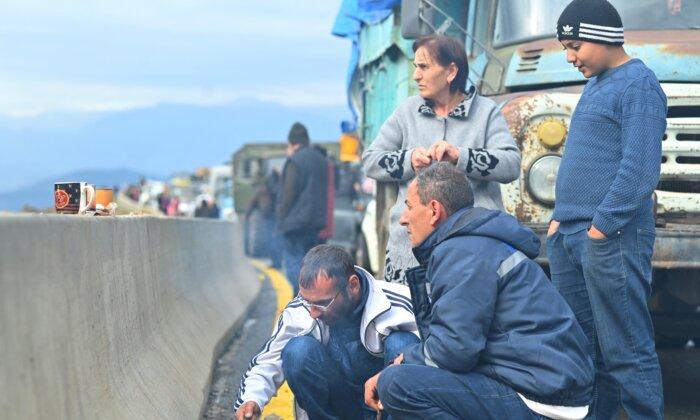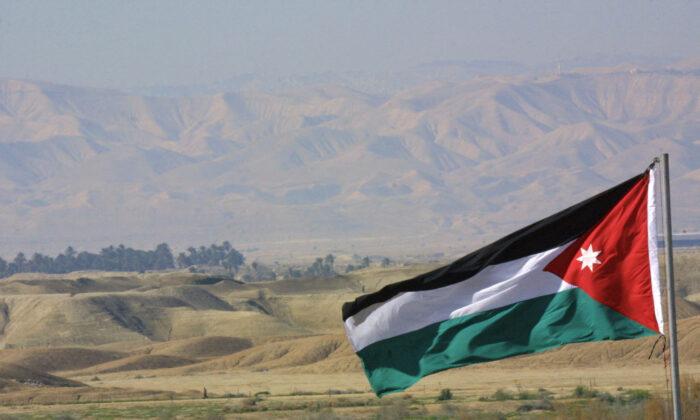Ethnic Armenians from Azerbaijan’s Nagorno-Karabakh region have continued to flock to Armenia by the thousands, one week after an Azerbaijani offensive that may reshape the political map of the South Caucasus.
More than 28,000 ethnic Armenian residents of the enclave have reportedly arrived in next-door Armenia since Baku carried out a successful 24-hour offensive to assert its control over the region.
Departing ethnic Armenians say they fear persecution at the hands of Azerbaijani authorities.
Baku, for its part, has vowed to respect the rights of Karabakh’s ethnic Armenian population, dismissing claims that it plans to “ethnically cleanse” the region.
Although most of Karabakh’s roughly 120,000 inhabitants are ethnic Armenians, the region is internationally recognized as part of Azerbaijan.
U.S. Secretary of State Antony Blinken has spoken with Azerbaijani President Ilham Aliyev at least twice this week to voice Washington’s concern with the humanitarian situation.
According to State Department spokesman Matthew Miller, Mr. Blinken has called for “unconditional protection and freedom of movement for civilians ... [and] unhindered humanitarian access to Nagorno-Karabakh.”
At a Sept. 26 press briefing, Mr. Miller said that Mr. Aliyev “has said there would be no further military action—and we expect him to abide by that.”

Turkish President Recep Tayyip Erdogan attends the first day of the 2023 NATO Summit in Vilnius, Lithuania, on July 11, 2023. Sean Gallup/Getty Images
Mr. Aliyev is set to hold talks with Armenian Prime Minister Nikol Pashinyan on Oct. 5 in the Spanish city of Granada to discuss a possible peace treaty between the two longtime antagonists.
On Sept. 19, Azerbaijan carried out a lightning offensive to disarm ethnic Armenian separatist groups in Nagorno-Karabakh and exert full control over the region.
The operation ended within 24 hours after separatist leaders agreed to lay down their arms in line with a ceasefire deal brokered by Moscow.
According to Armenian sources, at least 200 ethnic Armenians were killed during the offensive.
Azerbaijan says 192 of its soldiers were killed.
Turkish Leader Visits Exclave
Earlier this week, Turkish President Recep Tayyip Erdogan visited Azerbaijan’s autonomous Nakhichevan exclave, where he met with Mr. Aliyev.“I congratulate the victorious Azerbaijani army for its historic success and humane approach to the civilian population,” President Erdogan said at a joint press conference with his Azerbaijani counterpart.
“With this victory, there is a new window of opportunity for comprehensive normalization in the region.”
During President Erdogan’s brief visit, the two leaders signed a memorandum of understanding for the construction of a railway project linking Nakhichevan to Turkey’s northeastern city of Kars.
Russia, which maintains good ties with both NATO member Turkey and Azerbaijan (and which shares a border with the latter) hailed the meeting.

Russian peacekeepers evacuate civilians in the town of Askeran following the launch of a military operation by Azerbaijani forces in the region of Nagorno-Karabakh on Sept. 20, 2023. Russian Defence Ministry/Handout via Reuters
Kremlin spokesman Dmitry Peskov voiced hope that the meeting between the two leaders would “help ensure regional security and normalize the situation in Nagorno-Karabakh.”
“We know Baku and Ankara have very close relations,” Mr. Peskov said, going on to assert that Moscow’s ties with both capitals “are no less close.”
Turkey shares deep ethnic and cultural ties with Azerbaijan, whose people are ethnically Turkic and speak a dialect of Turkish.
In 2020, Azerbaijan—with Turkish support—won a six-week war with Armenia over Karabakh. That conflict also ended with a Moscow-brokered ceasefire that left Azerbaijan in control of the region.
Since then, Russian peacekeepers have remained deployed along the fraught Armenian–Azerbaijani border, where violence has continued to erupt intermittently.
‘The Zangezur Corridor’
Upon his return from Azerbaijan, President Erdogan called for opening the so-called Zangezur Corridor, a proposed land route linking Azerbaijan to Nakhichevan. Nestled between Turkey, Iran, and Armenia, Nakhichevan is internationally recognized as part of Azerbaijan.However, given the region’s complex geopolitical circumstances, Azerbaijan currently lacks an overland route into the exclave.
If carried out, the Zangezur Corridor would provide a road-and-rail link from eastern Turkey to Azerbaijan proper via Nakhichevan and southern Armenia.
The proposed route could be extended to include Iran and—eventually—the five Central Asian republics, whose populations are also ethnically Turkic.
“We hope to realize the Zangezur Corridor and establish uninterrupted road-and-rail links with Azerbaijan by way of Nakhichevan,” President Erdogan said at a Sept. 26 cabinet meeting.
He also voiced hope of turning the South Caucasus into a “basin of peace and prosperity” through joint projects with states of the region, including Iran.
Yerevan, for its part, has previously voiced opposition to the proposed land route through its territory. However, if Armenia declines to participate in the plan, the route could potentially go “through Iran,” according to President Erdogan.
In the past, Iran has been wary of the proposed land route, fearing it could hinder—or block—its international border with Armenia, although Tehran has reacted “positively” to the latest proposal, according to the Turkish leader.
When asked about the proposed land corridor, Mr. Miller said, “We have been engaged with the Turkish government on this issue.”
According to the spokesman, Mr. Blinken discussed the proposal with his Turkish counterpart on the sidelines of last week’s U.N. General Assembly meeting.
“We hope all our allies and partners can play a constructive role in reaching a lasting agreement [in the region], and that, of course, would include Turkey,” Mr. Miller said.
“But I don’t have a comment on a specific proposal.”







